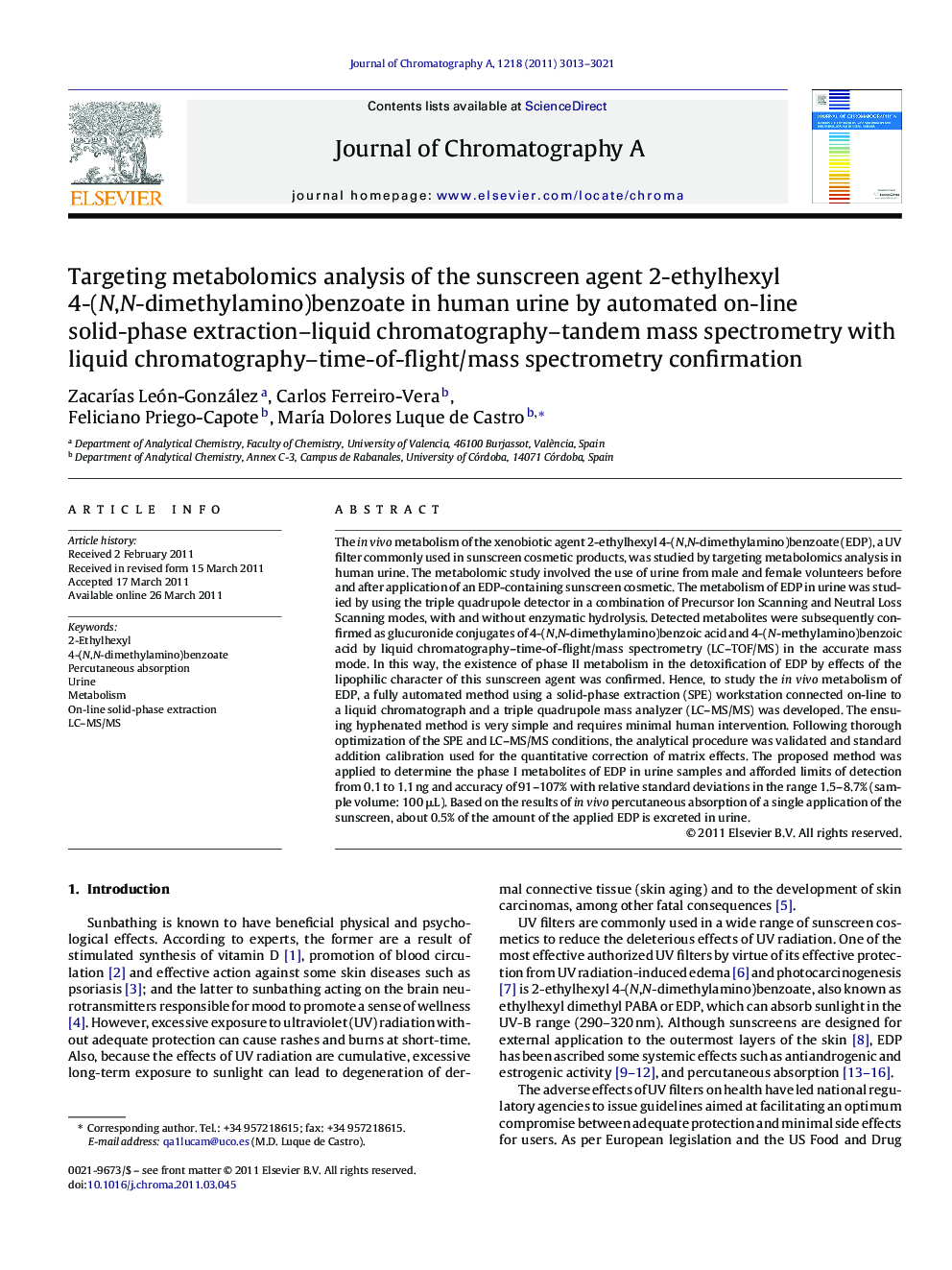| Article ID | Journal | Published Year | Pages | File Type |
|---|---|---|---|---|
| 1202203 | Journal of Chromatography A | 2011 | 9 Pages |
The in vivo metabolism of the xenobiotic agent 2-ethylhexyl 4-(N,N-dimethylamino)benzoate (EDP), a UV filter commonly used in sunscreen cosmetic products, was studied by targeting metabolomics analysis in human urine. The metabolomic study involved the use of urine from male and female volunteers before and after application of an EDP-containing sunscreen cosmetic. The metabolism of EDP in urine was studied by using the triple quadrupole detector in a combination of Precursor Ion Scanning and Neutral Loss Scanning modes, with and without enzymatic hydrolysis. Detected metabolites were subsequently confirmed as glucuronide conjugates of 4-(N,N-dimethylamino)benzoic acid and 4-(N-methylamino)benzoic acid by liquid chromatography–time-of-flight/mass spectrometry (LC–TOF/MS) in the accurate mass mode. In this way, the existence of phase II metabolism in the detoxification of EDP by effects of the lipophilic character of this sunscreen agent was confirmed. Hence, to study the in vivo metabolism of EDP, a fully automated method using a solid-phase extraction (SPE) workstation connected on-line to a liquid chromatograph and a triple quadrupole mass analyzer (LC–MS/MS) was developed. The ensuing hyphenated method is very simple and requires minimal human intervention. Following thorough optimization of the SPE and LC–MS/MS conditions, the analytical procedure was validated and standard addition calibration used for the quantitative correction of matrix effects. The proposed method was applied to determine the phase I metabolites of EDP in urine samples and afforded limits of detection from 0.1 to 1.1 ng and accuracy of 91–107% with relative standard deviations in the range 1.5–8.7% (sample volume: 100 μL). Based on the results of in vivo percutaneous absorption of a single application of the sunscreen, about 0.5% of the amount of the applied EDP is excreted in urine.
